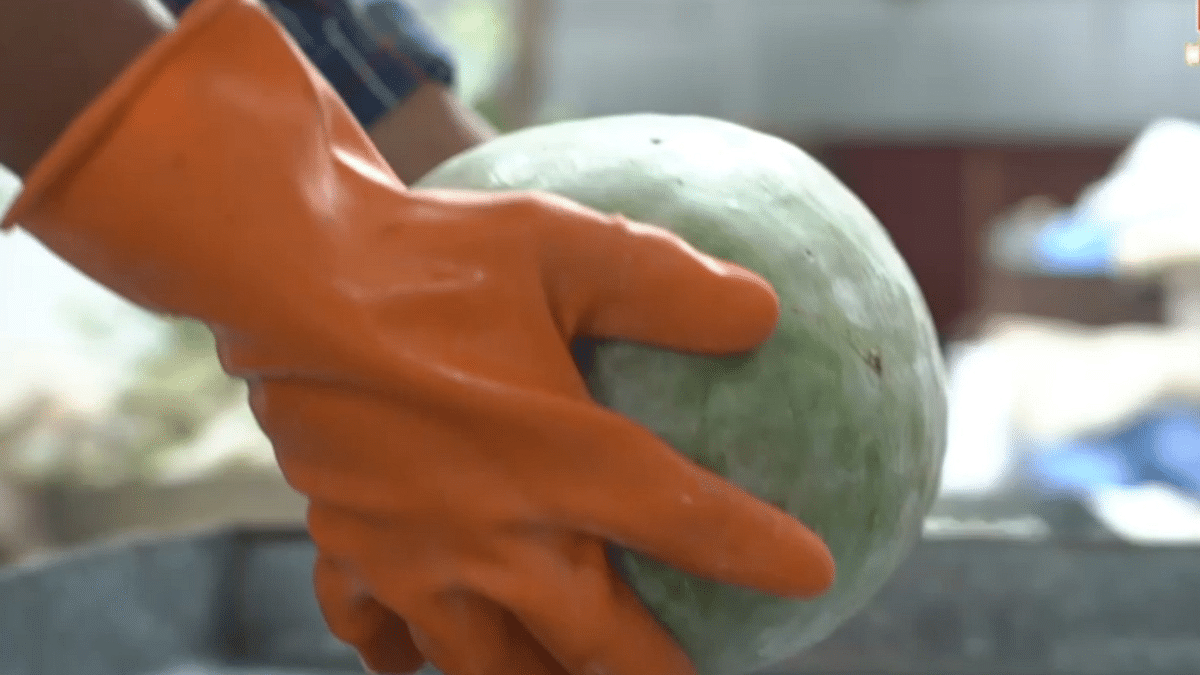Agra: No trip to Agra is complete without two quintessential experiences — a visit to the Taj Mahal and buying boxes of the city’s iconic sweet, the petha. A translucent confection made from ash gourd, or white pumpkin, petha is a popular delicacy across India and is also exported to other countries.
Beyond its culinary allure, the petha industry in Agra is also a significant economic catalyst for the city. As per news reports, this thriving industry serves as a livelihood for thousands of individuals, generating hundreds of crores in revenue each year.
According to Amit Goyal, managing director of a popular brand Panchhi Petha, today there are over 1,500 petha-making units in the city which produce an estimated 700-800 tonnes of petha per day.
However, the industry also faces significant challenges in the city due to the immense amount of organic waste it generates, posing a grave challenge for Agra’s municipal authorities.
To address the waste issue, the city administration has been in talks with owners of petha businesses to relocate the industry to Kalindi Vihar. Speaking to ThePrint, Agra Divisional Commissioner Amit Gupta said that at the 59th meeting of the Taj Trapezium Zone (TZZ) authority held last week, the issue of relocation had come up, but the industry representatives refused. The TTZ is a defined area of 10,400 sq km around the Taj Mahal to protect the monument from pollution.

According to a study released in December 2021 by the Centre for Science and Environment (CSE), ‘Petha Waste Management in Agra City’, the city’s petha industry generates around 17,800 kg of solid waste per day, which consists mostly of ash gourd peels, sugar syrup, and water used in the manufacturing process.
The waste is often dumped in public spaces, which raises the risk of outbreak of diseases like cholera, malaria, dengue, and diarrhoea, the study adds.
“Such unauthorised dumping of petha waste leads to a foul smell in the area and attracts disease-borne vectors that infect nearby residents,” K.K. Pandey, project manager at the Agra Municipal Corporation’s Swachh Bharat Mission unit told ThePrint.
Gupta said the administration has taken several steps to address the problem of petha waste.
In 2018, the local administration launched a campaign to educate petha producers about the importance of proper waste disposal and even provided financial assistance to help petha manufacturing units in the organised sector to purchase waste-disposal equipment, he said. However, since a large section of the industry falls under the unorganised sector, government benefits don’t extend to them.
According to a report by the National Institute of Food Technology Entrepreneurship and Management (NIFTEM), there are over 10 times more petha units in the unorganised sector than in the organised sector.
This is not even the first time that the issue has come up during a TTZ authority meeting. According to news reports, the relocation of the petha units in TTZ has been in the works for 10 years, but the proposal has fallen flat each time.
The reasons cited include lack of potable water in the proposed locations, lack of a garbage-disposal system, and no proper transportation.
“In its latest bid to move the petha industry, the Agra administration wants to shift all the units to Kalindi Vihar across the Yamuna. But the proposed area lacks even basic amenities…The water in Kalindi Vihar is hard and undrinkable, and saltwater alters the taste of petha,” said Goyal of Panchhi Petha.
Sunil Kumar Singhal, a petha seller, however, said that the industry has been demanding a ‘Petha Nagri’ behind Sikandra Sabzi Mandi on the Agra-Delhi Highway for a long time.
By relocating there, he said, the units will have easy access to all amenities such as transportation, water and power. “The administration should focus on this demand instead of moving the industry to a location where it could not survive,” he said.
But since the Agra Development Authority (ADA), the nodal agency overseeing the relocation, has already allocated land for ‘Petha Nagri’ in Kalindi Vihar, their demand remains unfulfilled, he added.
Also Read: Monkey menace returns to Taj days before visit of G-20 delegates, ASI says ‘no risk of attack’
Water woes
It is said that petha was first created for the Mughal emperor Jahangir, who was looking for a refreshing and cooling sweet treat during the summer months. The petha, a hit with the emperor, soon became a popular dessert throughout the Mughal Empire.
Since then, the industry around it has continued to grow in Agra, said Amit Goyal. What has also aided the industry is Agra’s location on the banks of the Yamuna river, where the soil is ideal for growing ash gourd.
However, one of the major challenges it faces is the rising cost of raw materials — one of them being, simply, water.
Goyal explained that at his petha units, several RO water plants have been installed to get clean, potable water in which the sweet is boiled.
“This keeps the taste unaffected. However, operating an RO plant is both costly and a hassle to maintain, which means that smaller petha units will not be able to afford its installation and the quality of their petha will suffer due to the hard water in Kalindi Vihar,” he said.
Speaking to ThePrint, Goyal suggested that the Ganga water pipeline, which is being laid from Palda Falls in Bulandshahr to Agra, can be used to provide water to the petha units.
“If the petha industry is supplied with Ganga water, there will be less resistance by the industry to the Agra administration’s shifting plans,” he said.
However, Kalindi Vihar is not on the route of the Ganga water pipeline. It is across the Yamuna, so unless the Jal Nigam lays a direct pipeline over the Yamuna, the Ganga water cannot reach Kalindi Vihar anytime soon.
Goyal also said that it would be ideal if all petha units are moved at once, rather than in batches.
Agra Divisional Commissioner Amit Gupta agreed. He said although some units are ready to shift to Kalindi Vihar, the ideal solution to the waste problem would be to move all the petha units to one location, where the waste generated could be easily managed by the municipal authorities.
This move will also regulate the petha industry, which mostly runs in the unorganised sector at present, Gupta added.
According to Rajesh Aggarwal, head of the Shaheed Bhagat Singh Petha Kutir Association, though, the ADA’s efforts to relocate Agra’s petha industry is part of a deep-rooted conspiracy to destroy “all industries in Agra”.
Speaking to ThePrint, he said that first the long-standing case in the Supreme Court against pollution in Agra, filed by lawyer and environmentalist M.C. Mehta, had resulted in Agra’s foundry and leather tanning industry dying slow deaths, and the petha industry is simply the latest victim.
Three attempts have been made to shift the industry out of the city in the past decade, he said — first to Transport Nagar, then to Shastripuram, and now to Kalindi Vihar.
“This is impractical,” he added.
(Edited by Richa Mishra)



